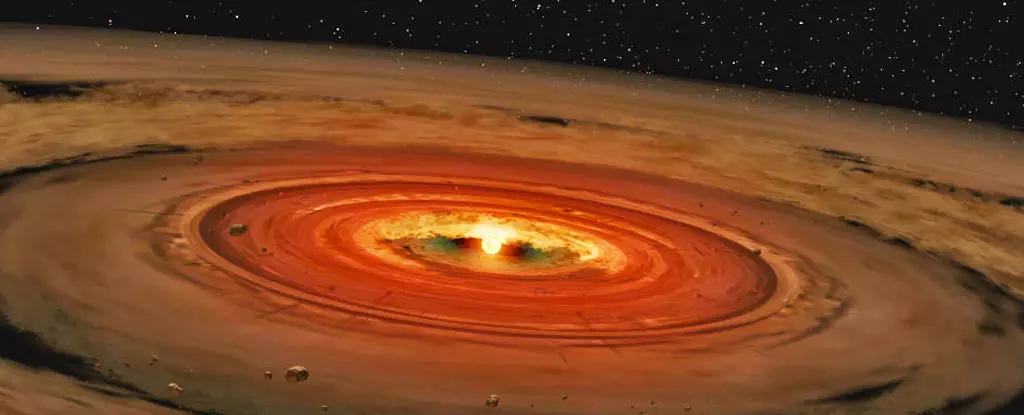A cosmic structure located roughly 1,000 light-years from Earth known as IRAS 23077+6707, resembling a giant butterfly, was originally observed by Ciprian T. Berghea in 2016 using the Panoramic Survey Telescope and Rapid Response System (Pan-STARRS). What surprised many astronomers was the fact that the structure remained unchanged for years, raising questions about its nature. Recently, two international teams of astronomers conducted follow-up observations using the Submillimeter Array at the Smithsonian Astrophysical Observatory (SAO) in Hawaii to gain a better understanding of IRAS 23077.
In a series of papers describing their findings, the teams revealed that IRAS 23077 is a young star with a massive protoplanetary debris disk, which happens to be the largest ever observed. The first paper, led by Berghea, highlighted the discovery of IRAS 23077 as a young star surrounded by what appeared to be a substantial planet-forming disk. The second paper, led by CfA postdoc Kristina Monsch, confirmed this finding using data from Pan-STARRS and the Submillimeter Array.
Protoplanetary disks are essentially planetary nurseries consisting of gas and dust that have settled around newly formed stars. Over time, these disks evolve into rings as material coalesces into protoplanets with certain orbits. These protoplanets can eventually develop into rocky planets, gas giants, and icy bodies. For astronomers, studying these disks is crucial as they can provide information about the size and mass of young stars since they rotate with a specific signature. However, obtaining accurate observations of these disks can be challenging depending on their orientation relative to Earth.
The Fascinating Discovery of IRAS 23077
When the combined power of the Pan-STARRS and Submillimeter Array was used to observe IRAS 23077, the astronomers were taken aback by what they found. Kristina Monsch, an SAO astrophysicist, led the SMA campaign and expressed their amazement at discovering the largest planet-forming disk ever known. The rich concentration of dust and gas in the disk serves as evidence of its potential to form numerous giant planets, even at distances surpassing 300 times that between the Sun and Jupiter.
The discovery of IRAS 23077, nicknamed “Dracula’s Chivito,” prompts important questions about how many similar objects may have gone unnoticed. Astronomers are intrigued by the potential of further studying IRAS 23077 to unearth insights into the formation of planets in such extreme young environments. Additionally, this discovery inspires astronomers to search for comparable objects within our galaxy to gain valuable information about planetary systems in their earliest stages of formation.
The unveiling of the largest protoplanetary disk ever discovered in IRAS 23077 offers a deeper understanding of planet formation and the surrounding environments. It opens up new avenues for exploring planet formation processes in extreme young systems and provides a glimpse into the early stages of the development of planetary systems, contributing to our knowledge of the origins of the Solar System. Through collaborative efforts and groundbreaking discoveries like IRAS 23077, astronomers continue to push the boundaries of knowledge in the field of astrophysics.


Leave a Reply